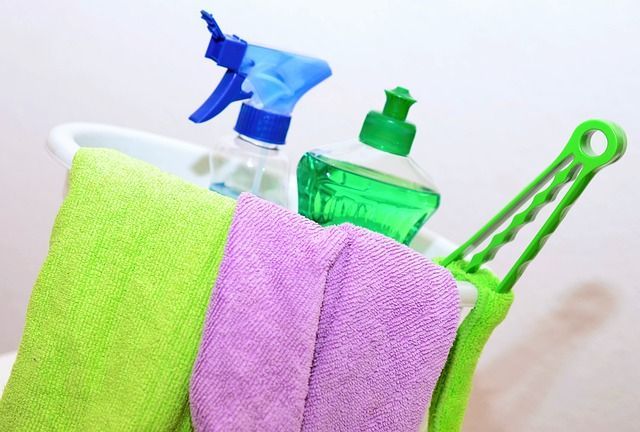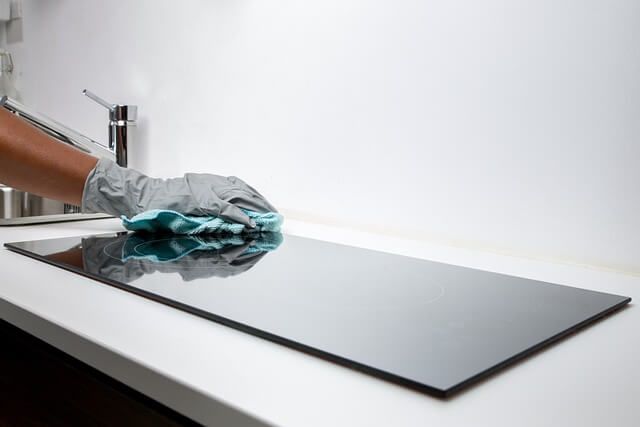Embrace a Cleaner, Greener Home: The Benefits of Green Cleaning Products
Daniel Lee • August 4, 2024
The body content of your post goes here. To edit this text, click on it and delete this default text and start typing your own or paste your own from a different source.
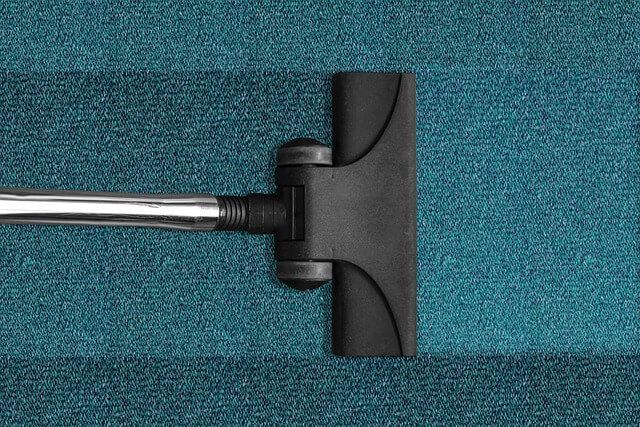
By Daniel Lee
•
September 9, 2024
When it comes to maintaining a clean and organized home, you might find yourself debating between doing it yourself (DIY) or hiring a professional cleaning service. Both approaches have their own set of advantages and considerations. In this article, we’ll explore the pros and cons of DIY cleaning versus professional services, helping you determine which option is best suited for your needs. DIY Cleaning: The Benefits and Drawbacks Advantages of DIY Cleaning: Cost-Effective: One of the most significant advantages of DIY cleaning is the cost savings. By handling the cleaning yourself, you avoid the expense of hiring a professional service. This can be particularly appealing if you’re on a tight budget. Control and Flexibility: DIY cleaning allows you to control every aspect of the process. You can choose the products you use, set your own schedule, and address specific areas or issues as they arise. This level of control can be beneficial if you have particular preferences or needs. Exercise and Stress Relief: Cleaning can be a good physical workout, helping you stay active. Additionally, some people find that cleaning can be a stress-relieving activity, providing a sense of accomplishment and order in their home. Drawbacks of DIY Cleaning: Time-Consuming: Cleaning your home can be a significant time investment, especially if you have a large house or a busy schedule. The time spent cleaning might be better spent on other activities or responsibilities. Lack of Expertise: Without professional training, you may not be aware of the most effective cleaning techniques or the best products for specific tasks. This can result in less effective cleaning and potential damage to surfaces if improper products are used. Inconsistent Results: The quality of DIY cleaning can vary depending on your level of commitment and attention to detail. Inconsistent results might mean some areas of your home aren’t cleaned as thoroughly as others. Professional Cleaning Services: The Benefits and Drawbacks Advantages of Professional Cleaning Services: Expertise and Experience: Professional cleaners are trained to handle a wide range of cleaning tasks with precision. They use advanced techniques and high-quality products to achieve superior results. Their expertise can ensure that your home is cleaned thoroughly and efficiently. Time Savings: Hiring a professional service frees up your time, allowing you to focus on other activities or responsibilities. This can be particularly valuable if you have a busy schedule or simply prefer to spend your time elsewhere. Consistent Quality: Professional cleaning services provide consistent and reliable results. They have standardized procedures and checklists to ensure that every part of your home is cleaned to a high standard. Specialized Services: Many cleaning services offer specialized services, such as deep cleaning, carpet cleaning, or allergen removal. These services can address specific needs and provide a level of cleaning that might be difficult to achieve on your own. Drawbacks of Professional Cleaning Services: Cost: One of the primary drawbacks of professional cleaning services is the cost. Depending on the frequency and scope of the cleaning, the expense can add up over time. However, many find the convenience and quality of service worth the investment. Scheduling and Availability: Coordinating with a professional cleaning service can sometimes be challenging, particularly if you have a busy or irregular schedule. You may need to work around their availability or adjust your own plans. Trust and Security: Inviting strangers into your home requires a level of trust. While reputable cleaning services conduct background checks on their staff, it’s important to research and choose a company with a strong reputation for reliability and professionalism. Cost Comparison of Cleaning Methods DIY Cleaning Costs: Cleaning Supplies: Costs for cleaning products, tools, and equipment can vary. On average, you might spend $20 to $50 per month on these supplies. Time Investment: The time spent cleaning can be significant, depending on the size of your home and the thoroughness of the cleaning. Professional Cleaning Costs: Service Fees: The cost of professional cleaning services varies based on factors such as the size of your home, the frequency of cleaning, and the type of services required. On average, you might expect to pay between $100 and $300 per visit for standard cleaning. Additional Services: Specialized services or deep cleaning may incur extra charges. Which is Right for You? Deciding between DIY cleaning and professional services depends on your individual needs, preferences, and circumstances. Here are a few questions to consider: What is your budget for cleaning? How much time can you realistically dedicate to cleaning? Do you have specific cleaning needs or preferences? Are you comfortable with the level of cleanliness achieved through DIY efforts? In many cases, a combination of both methods might be the ideal solution. For example, you could handle regular maintenance cleaning yourself while scheduling professional services for deep cleans or special occasions. Conclusion Both DIY cleaning and professional cleaning services offer unique advantages and drawbacks. By evaluating your needs, budget, and preferences, you can make an informed decision about which approach is best for you. Whether you choose to tackle cleaning tasks yourself or hire a professional, the key is to find a solution that keeps your home clean, healthy, and welcoming.
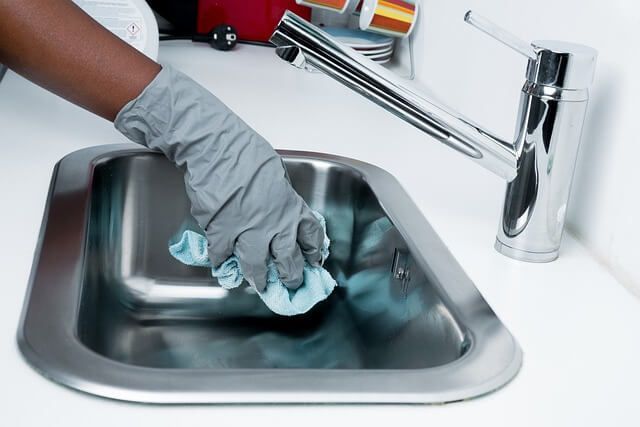
By Daniel Lee
•
September 9, 2024
Finding the perfect cleaning service for your home can feel like a daunting task, especially with so many options available. Whether you're looking to maintain your home's cleanliness or need a thorough deep clean, choosing the right cleaning service can make all the difference. In this guide, we'll walk you through key considerations and practical tips to help you make an informed decision. 1. Assess Your Cleaning Needs Before you start searching for a cleaning service, it's essential to evaluate your specific needs. Ask yourself the following questions: What type of cleaning do you require? (e.g., regular maintenance, deep cleaning, post-renovation) How often do you need the service? (e.g., weekly, bi-weekly, monthly) Are there any special requirements or concerns? (e.g., pet hair, allergy-friendly products) Understanding your needs will help you find a service that can tailor its offerings to match your requirements. 2. Research Potential Cleaning Services Once you have a clear idea of what you're looking for, start researching local cleaning services. Look for: Online Reviews: Check platforms like Google, Yelp, and Facebook for customer reviews and ratings. Look for consistent positive feedback and be cautious of services with numerous negative reviews. Recommendations: Ask friends, family, or neighbors for recommendations. Personal experiences can provide valuable insights. Company Website: Review the company's website to understand their services, expertise, and values. A professional and informative website can be a good indicator of their quality. 3. Evaluate Key Factors When considering potential cleaning services, pay attention to the following factors: a. Services Offered: Ensure that the cleaning service offers the type of cleaning you need. Some companies specialize in specific areas, such as residential or commercial cleaning, while others offer a broader range of services. b. Experience and Expertise: Choose a company with a solid track record and experienced staff. Experience often correlates with quality, so look for companies with a proven history of reliable service. c. Insurance and Bonding: Verify that the cleaning service is insured and bonded. This provides protection in case of accidental damage or theft during the cleaning process. d. Cleaning Products and Equipment: Inquire about the cleaning products and equipment used. If you prefer eco-friendly options or have specific product preferences, ensure the company can accommodate your needs. e. Pricing Structure: Understand the pricing structure and what is included in the cost. Some companies charge by the hour, while others have flat rates or offer customized quotes based on the size and condition of your home. f. Flexibility and Availability: Check the company's availability and flexibility to accommodate your schedule. A good cleaning service should be able to work around your needs and provide timely service. 4. Ask the Right Questions Before making your final decision, ask potential cleaning services the following questions: What is your process for screening and training staff? Ensure the company hires trustworthy and well-trained employees. Can you provide references from previous clients? Contacting references can give you a better understanding of the company's reliability and performance. What is your policy on handling complaints or issues? Understand how the company addresses any problems that may arise during or after the cleaning. 5. Review the Contract Carefully review the contract or service agreement before committing. Ensure it clearly outlines: Scope of Services: What specific tasks will be performed? Frequency and Scheduling: How often will the cleaning take place, and at what times? Payment Terms: What are the payment terms and conditions? Cancellation and Termination Policy: What is the process for canceling or terminating the service if needed? 6. Trust Your Instincts Finally, trust your instincts. Choose a cleaning service that feels right for you in terms of professionalism, communication, and overall fit. A good cleaning service should make you feel comfortable and confident in their ability to care for your home. Conclusion Selecting the right cleaning service for your home involves careful consideration and research. By assessing your needs, evaluating potential services, asking the right questions, and reviewing the contract, you can make an informed choice that ensures your home remains clean and well-maintained. With the right cleaning service, you can enjoy a spotless home and more time to focus on what matters most to you.

By Daniel Lee
•
September 9, 2024
In recent years, the shift towards eco-friendly practices has gained tremendous momentum, and house cleaning is no exception. Embracing eco-friendly cleaning solutions not only contributes to a healthier environment but also promotes a cleaner, safer home for you and your loved ones. In this ultimate guide to eco-friendly house cleaning, we'll explore the benefits, top green products, and practical DIY solutions to help you maintain a spotless, environmentally conscious home. Introduction to Eco-Friendly Cleaning Eco-friendly cleaning, also known as green cleaning, involves using products and methods that minimize harm to the environment and reduce exposure to potentially harmful chemicals. Traditional cleaning products often contain harsh chemicals that can adversely affect indoor air quality and contribute to environmental pollution. In contrast, eco-friendly cleaning solutions utilize natural ingredients that are both effective and safe for you, your family, and the planet. Advantages for Health and the Environment 1. Health Benefits: Eco-friendly cleaning solutions are typically free from harmful chemicals such as ammonia, chlorine, and synthetic fragrances, which can cause respiratory issues, skin irritation, and allergies. By opting for green cleaning products, you reduce the risk of these health concerns, creating a healthier living environment. 2. Environmental Impact: Green cleaning products often come in biodegradable packaging and use sustainable ingredients, minimizing their impact on landfills and ecosystems. Moreover, these products are less likely to pollute waterways, which helps protect aquatic life and maintains clean water sources. 3. Improved Indoor Air Quality: Many conventional cleaning agents release volatile organic compounds (VOCs) into the air, which can contribute to poor indoor air quality. Eco-friendly cleaning products, on the other hand, are formulated to be low in VOCs, ensuring better air quality in your home. Top Green Cleaning Products Baking Soda: A versatile and effective cleaner, baking soda can tackle stains, odors, and grime. It's perfect for scrubbing surfaces, freshening carpets, and even unclogging drains. White Vinegar: White vinegar is a natural disinfectant and deodorizer. It can be used to clean glass, remove stains, and disinfect surfaces. Its acidic properties make it a great alternative to harsh chemical cleaners. Castile Soap: Made from vegetable oils, Castile soap is a gentle yet powerful cleaner. It can be used for washing dishes, cleaning countertops, and even as a body wash. Lemon Juice: Lemon juice has natural antibacterial and antiviral properties. Its acidity helps cut through grease and stains, making it ideal for kitchen and bathroom cleaning. Essential Oils: Essential oils like tea tree, lavender, and eucalyptus not only add a pleasant fragrance to your cleaning solutions but also offer natural antibacterial and antifungal properties. DIY Eco-Friendly Cleaning Solutions 1. All-Purpose Cleaner: Combine 1 cup of water, 1/2 cup of white vinegar, and 10-15 drops of essential oil (such as lavender or lemon) in a spray bottle. This mixture effectively cleans countertops, windows, and other surfaces. 2. Scrubbing Paste: Mix 1/2 cup of baking soda with 1/4 cup of water to form a paste. This can be used to scrub sinks, bathtubs, and stovetops, removing tough stains and grime. 3. Carpet Freshener: Sprinkle baking soda over carpets, let it sit for 15-30 minutes, then vacuum it up. This helps neutralize odors and refresh your carpets. 4. Glass Cleaner: Combine 1 cup of water, 1/4 cup of white vinegar, and 1/4 cup of rubbing alcohol in a spray bottle. Use this solution to clean glass and mirrors for a streak-free shine. Tips for Maintaining an Eco-Friendly Home 1. Reduce Waste: Opt for reusable cleaning cloths and mop heads instead of disposable ones. This reduces the amount of waste generated from single-use products. 2. Conserve Energy: When cleaning, use energy-efficient appliances and adjust your cleaning schedule to avoid peak energy usage times. 3. Use Natural Ventilation: Open windows while cleaning to allow fresh air to circulate and help remove any residual cleaning product fumes. 4. Recycle and Compost: Properly dispose of any packaging materials and consider composting organic waste to reduce your environmental footprint. 5. Educate and Advocate: Share your eco-friendly cleaning practices with friends and family, and support companies that prioritize sustainable practices in their products and packaging. Conclusion Adopting eco-friendly cleaning practices is a powerful way to enhance both your health and the environment. By using green cleaning products, incorporating DIY solutions, and following sustainable habits, you can create a cleaner, safer, and more environmentally responsible home. Start making the switch today and enjoy the benefits of a greener, healthier living space.

By Daniel Lee
•
August 6, 2024
Carpet cleaning is a valuable service aimed at maintaining the appearance, hygiene, and longevity of carpets and rugs. Carpets, while adding warmth and aesthetic appeal to spaces, can accumulate dust, dirt, allergens, and stains over time. Regular cleaning helps preserve their look and functionality, ensuring a healthier environment and extending their lifespan. Types of Carpet Cleaning Services Steam Cleaning (Hot Water Extraction): This method involves injecting hot water mixed with cleaning agents into the carpet fibers and then extracting it along with dirt and debris. It's effective for deep cleaning and is often recommended by manufacturers. Dry Cleaning: This technique uses minimal water and involves applying a dry cleaning solution to the carpet, which is then agitated to break down dirt. A machine is used to vacuum up the residue. It’s quicker drying and suitable for carpets that can’t tolerate excessive moisture. Shampooing: This traditional method involves applying a foamy shampoo to the carpet, which is then scrubbed in and later extracted. It's less common now but still used for certain situations. Encapsulation: This method involves applying a cleaning agent that crystallizes dirt into powder, which is then vacuumed up. It’s low moisture and allows carpets to be walked on almost immediately. Bonnet Cleaning: This is a low-moisture method where a rotating brush or bonnet pad is used to clean the surface of the carpet. It’s generally used for maintaining commercial carpets rather than deep cleaning. Benefits of Professional Carpet Cleaning Improved Air Quality: Carpets can trap dust, allergens, and other pollutants. Professional cleaning helps remove these particles, improving indoor air quality. Extended Carpet Life: Regular cleaning prevents the buildup of dirt and grime that can wear down carpet fibers, extending the life of the carpet. Enhanced Appearance: Professional cleaning restores the carpet’s appearance, removing stains and freshening up the look, which can be especially important for maintaining the aesthetic of both residential and commercial spaces. Stain Removal: Professionals use specialized products and techniques to tackle tough stains and spills, which can be challenging to handle with home remedies alone. Odor Elimination: Cleaning helps remove odors caused by pets, spills, or other sources, leaving the carpet smelling fresh. Choosing a Carpet Cleaning Service When selecting a carpet cleaning service, consider the following factors: Reputation and Reviews: Look for companies with positive customer feedback and a good track record in the industry. Experience and Certifications: Ensure the service provider has trained technicians and relevant certifications, which can indicate a higher level of expertise. Methods and Equipment: Check if the company uses modern, effective cleaning methods and equipment that align with your needs. Pricing and Transparency: Request a detailed estimate and understand what’s included in the service to avoid unexpected costs. Environmental Considerations: If you’re concerned about the chemicals used, inquire about eco-friendly or low-VOC (volatile organic compound) options. Overall, professional carpet cleaning is an investment in maintaining a clean, healthy, and visually appealing space. Whether for a home or business, keeping carpets in top condition through regular, professional cleaning is a wise choice for both comfort and longevity.
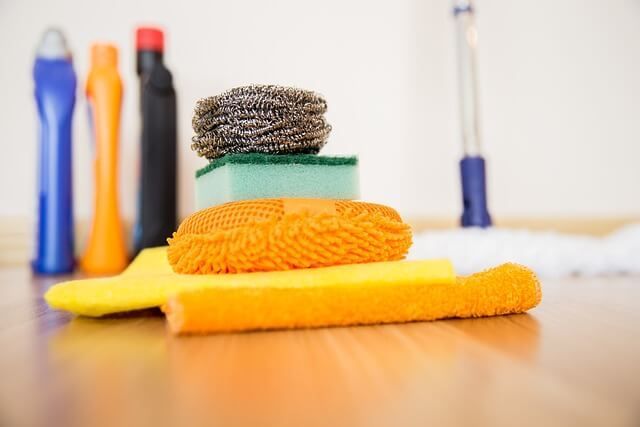
By Daniel Lee
•
August 4, 2024
Understanding Mold and Mildew: Health Risks and How Regular Cleaning Can Prevent Them Mold and mildew are common household problems that can pose significant health risks and damage your home if left unchecked. Understanding these issues, their negative health effects, and the importance of regular cleaning can help you maintain a healthier living environment. What Are Mold and Mildew? Mold: Mold is a type of fungus that grows in damp, warm environments. It appears as a fuzzy or slimy patch and can be various colors, including black, green, and white. Mildew: Mildew is a specific type of mold that typically grows on flat surfaces. It appears as a powdery or downy substance and is often white, gray, or yellow. Both mold and mildew thrive in environments with high humidity and poor ventilation. They are often found in bathrooms, basements, and areas with water damage. Negative Health Effects Respiratory Issues Allergies: Mold spores and mildew can trigger allergic reactions, including sneezing, coughing, and itchy eyes. People with asthma or other respiratory conditions may experience worsened symptoms. Sinus Problems: Exposure to mold can lead to sinusitis, characterized by sinus pain, nasal congestion, and headaches. Skin Irritations Rashes and Itching: Contact with mold or mildew can cause skin irritations, rashes, or itching, particularly for those with sensitive skin or allergies. Toxic Reactions Mycotoxins: Some types of mold produce mycotoxins, which can be harmful when inhaled or ingested. These toxins may cause more severe health issues, including neurological symptoms and weakened immune response. Weakened Immune System Infections: For individuals with compromised immune systems, mold exposure can lead to more serious infections or exacerbate existing health conditions. How Regular Cleaning Helps Prevent Mold and Mildew Control Humidity Levels Dehumidifiers: Use dehumidifiers to maintain indoor humidity levels below 60%. Keeping humidity levels in check helps prevent mold and mildew growth. Ventilation: Ensure proper ventilation in areas prone to moisture, such as bathrooms and kitchens, to reduce humidity and improve air circulation. Regular Cleaning Surface Wipes: Regularly clean surfaces with mildew-resistant cleaners to prevent mold and mildew buildup. Pay special attention to damp or high-humidity areas. Wash Linens and Curtains: Frequently wash bath mats, shower curtains, and other linens to prevent mold and mildew growth. Immediate Repairs Fix Leaks: Address any leaks in pipes, roofs, or walls promptly to prevent water from accumulating and creating a breeding ground for mold and mildew. Dry Wet Areas: Quickly dry any areas that become wet, such as after a spill or flood, to prevent mold growth. Proper Cleaning Techniques Use Antimicrobial Cleaners: Opt for antimicrobial cleaning solutions designed to kill mold and mildew. Be sure to follow manufacturer instructions for effectiveness. Scrub and Rinse: Scrub affected areas thoroughly and rinse well to remove any residual mold spores or mildew. Monitor and Inspect Regular Inspections: Periodically check for signs of mold or mildew, especially in areas prone to dampness or water damage. Preventive Measures: Consider using mold-resistant paints and materials in high-moisture areas to further reduce the risk of growth. Conclusion Mold and mildew can significantly impact your health and home if not properly managed. By understanding their risks and incorporating regular cleaning and maintenance practices, you can effectively prevent their growth and maintain a healthier living environment. Keep your home dry, clean, and well-ventilated to stay ahead of mold and mildew, ensuring a safe and comfortable space for you and your family. Do you have any tips or experiences with managing mold and mildew? Share them in the comments below!
GET A FREE ESTIMATE TODAY
Your trusted partner in keeping your home sparkling clean. With top-notch service, eco-friendly products, and a commitment to excellence, we deliver unmatched quality and reliability. Experience the difference with Hoffman Estates Cleaning Services—where cleanliness meets peace of mind. For more information or to schedule a cleaning, contact us today!
